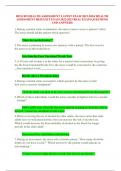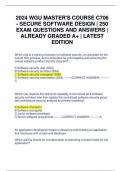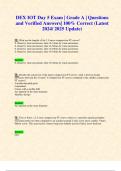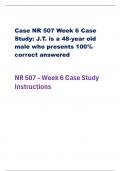Exam (elaborations)
Solutions Manual for Calculus Single and Multivariable 7th Edition By Hughes Hallett, McCallum / All Chapters / Latest Version 2024 A+
- Course
- Institution
- Book
Solutions Manual for Calculus Single and Multivariable 7th Edition By Hughes Hallett, McCallum / All Chapters / Latest Version 2024 A+ Solutions Manual for Calculus Single and Multivariable 7th Edition By Hughes Hallett, McCallum / All Chapters / Latest Version 2024 A+
[Show more]












